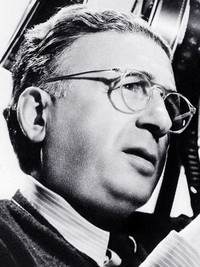Karl Freund

At the age of 16, Karl Freund -- who would photograph some of the great expressionist films as well as "I Love Lucy" -- began his long, illustrious career in motion pictures as a projectionist. Within two years, he had graduated to camera operator and received a variety of assignments, including newsreels and shorts, particularly for Pathe. Always an innovator, Freund was experimenting with sound film as early as 1908, and also developed his own camera. In the 1920s, Freund worked at the UFA studios during what has become known as the Golden Age of German cinema. Collaborating with such film artists as Fritz Lang, F.W. Murnau, Paul Wegener and E.A. Dupont, Freund helped to create some of the most beautiful and highly regarded films of the silent era. Freund was renowned for his daring camera angles, and his lighting effects, the latter a hallmark of the expressionism school. In 1924, he worked on "The Last Laugh" with Murnau and screenwriter Carl Mayer. Mayer collaborated closely with Freund to write a script exploiting the potentials of a moving camera. The camera became an integral part of the narrative, interpreting and visualizing the central character's state of mind. To film one scene where the main character is intoxicated, Freund strapped the camera to his chest, batteries to his back for balance, and stumbled about like a drunken man.